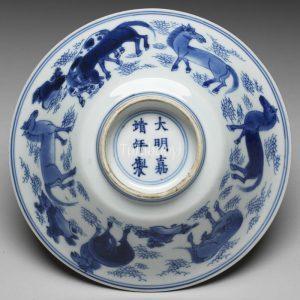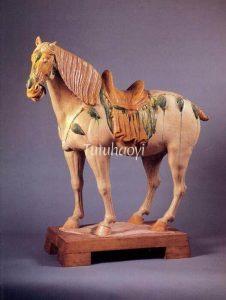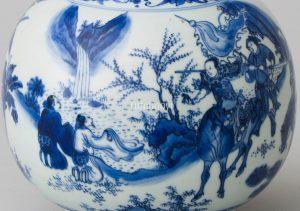Showing Results Containing
Have you ever wondered why the image of the prunus has been a popular motif in Chinese decorative art? Why do Chinese literati love to write poems about plum blossoms and paint them in their art works? Dr Yibin Ni will explain to you the symbolic ...
The following article is a discussion of the substitution of a mythical beast for a horse as Grand Duke Jiang’s mount on three classic porcelain vases adorned with the same story scene of ‘Bo Yi and Shu Qi Trying to Stop the Mighty Zhou Army’. It ...
Through analysing a famous theme that depicts Bo Yi and Shu Qi Stopping the Zhou Army, Dr Yibin Ni has compared a number of porcelain vessels from Ming and Qing dynasties, and demonstrated his unique insight which can facilitate the correct dating...
Do you wonder why there is a goat drawing a carriage, rather than a horse, on traditional Chinese art pictures? Why are there so many people watching someone in a chariot? What is the story behind it? Here is what Dr Yibin Ni has to tell you.
The ‘Eight Horses’ (Ba Jun Tu 八骏图) is a classic motif in Chinese art, especially prominent in ancient paintings. Its origins are closely tied to the legendary journeys of King Mu of the Zhou Dynasty (周穆王), who reigned around the 10th century BCE. According to The Tale of King Mu (Mu Tianzi Zhuan 穆天子传), ...
This story scene originates from one of the four famous romantic plays in Yuan dynasty, Pei Shaojun on horseback meeting Li Qianjin over the garden wall (also known as On Horseback and over the Garden Wall) 裴少俊墙头马上, which was written by playwright Bai Pu (白朴 1226 – after 1306).
Pei Shaojun ...
No animal has exercised as much influence over the destiny of China as the horse, which was central to the power of the various mounted nomadic peoples who dominated north China during the Period of Disunion (220–581CE), and the entire empire under the Mongols (Yuan dynasty, 1271–1368) and Manchus (Qing dynasty, 1644–191...
Meng Haoran (孟浩然, c. 690–740) is one of the most renowned poets in Tang dynasty (618–906). He started off pursuing a civil service career and then abandoned it to concentrate on poetry. He was a major influence on other Tang and later poets because of his innovative focus on nature. There is a play attributed to the note...
The Chinese character for ‘monkey’ is 猴 hou and it puns on the word for ‘marquis’ in Chinese 侯 hou. The expression ‘mashang 马上’ in Chinese is ambiguous in that it can mean, literally, ‘on a/the horse’, or it can mean, idiomatically, ‘right away’. Therefore, an image of a monkey on the back of a...
Bo Yi (or Boyi, 伯夷) and Shu Qi (or Shuqi, 叔齐) were sons of the ruler of Guzhu (孤竹), a vassal state of the Shang dynasty (商朝, 16th-11th cent. BCE). As the king was getting old, he wanted Shu Qi, his youngest son, to inherit his throne. However, when the father died, Shu Qi asked Bo Yi to take over th...
Emperor Yang of the Sui dynasty (隋炀帝, r. 606-18) is known for many achievements, such as linking the Yellow and Yangzi Rivers with the man-made Grand Canal, leading successful military campaigns expanding the Sui territory, and being accomplished in the arts. Despite those, Emperor Yang is also considered to have brought...










